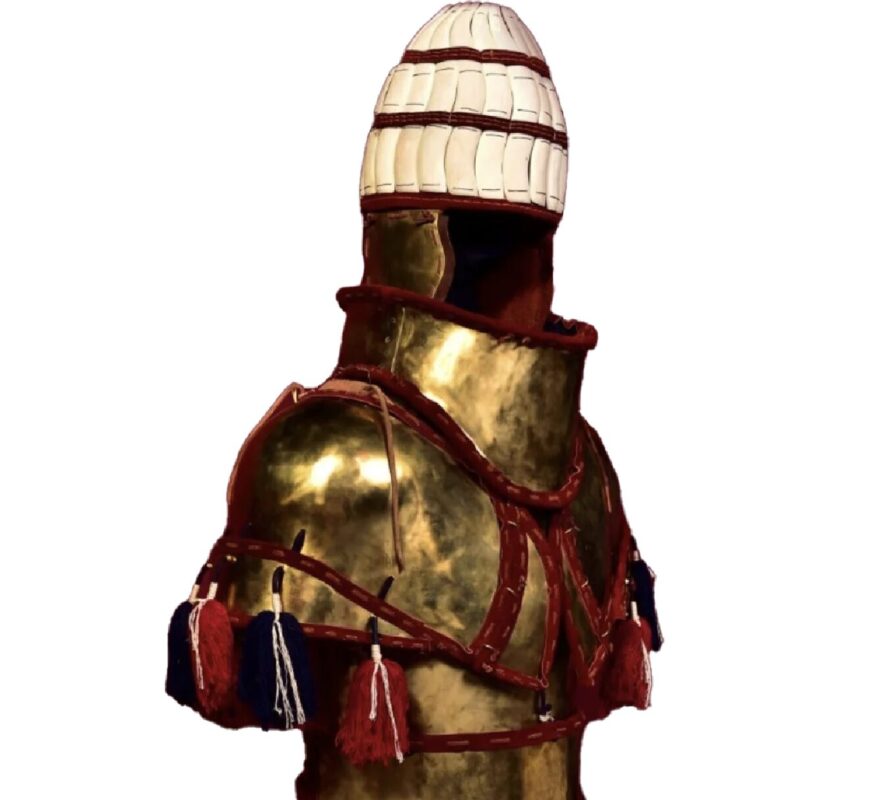Ancient Greek body armor, dating back 3,500 years, has been demonstrated to be battle-ready according to a new study where 13 soldiers wore replicas during an 11-hour simulation. The study, published in PLOS One and reported by Greekreporter.com, reveals that Mycenaean soldiers’ armor could withstand the rigors of combat.
Researchers utilized a suit of armor discovered in 1960 in Dendra, near the ancient city of Mycenae. They enlisted 13 marines from the Hellenic Armed Forces to test the armor’s durability. This armor includes a boar’s tusk helmet and bronze plates, which have sparked debates among archaeologists regarding their practicality in battle.
“Since its discovery, the question has remained as to whether the armor was purely for ceremonial purposes or for use in battle,” explained lead study author Andreas Flouris, a professor of physiology at the University of Thessaly in Greece, to the Athens Macedonia News Agency. “The Dendra armor is considered one of the oldest complete suits of armor from the European Bronze Age.”
To test the armor’s effectiveness, the researchers equipped volunteers with replicas and historical weapons such as spears and stones. They then conducted an 11-hour Bronze Age warfare simulation based on accounts from Homer’s “The Iliad,” which depicts the final days of the Trojan War.
“We extracted the information needed to create a Late Bronze Age combat simulation protocol, replicating the daily activities performed by elite warriors in the Late Bronze Age,” Flouris stated. They also used paleoclimate data to recreate the environmental conditions of the Late Bronze Age in Troy, which had temperatures around 64 to 68 degrees Fahrenheit (18 to 20 degrees Celsius) and relative humidity between 70 and 80 percent.
The armor replicas were crafted from a copper and zinc alloy, closely resembling the original bronze. They meticulously followed the artifact’s measurements, weighing 51 pounds (23 kilograms).
Additionally, the volunteers adhered to a diet similar to that of Mycenaean soldiers, including bread, beef, goat cheese, green olives, onions, and red wine. “Interestingly, our results for blood glucose showed that the nutrition plan provided adequate energy for the volunteers during the 11-hour protocol,” Flouris noted.
Throughout the simulation, the volunteers engaged in various combat scenarios such as duels, foot warrior versus chariot, and chariot versus ship. The findings showed that the armor did not hinder the soldiers’ fighting abilities or cause significant strain.
The study concluded that the ancient Greek armor was indeed suitable for combat, not just ceremonial purposes. “The efficacy and variety of Mycenaean swords and spears has long been recognized. The addition of ‘heavy’ armor would have given elite Mycenaean warriors considerable advantages over those with only shields or lighter ‘scale’ armor used in the Middle East,” Flouris said.








